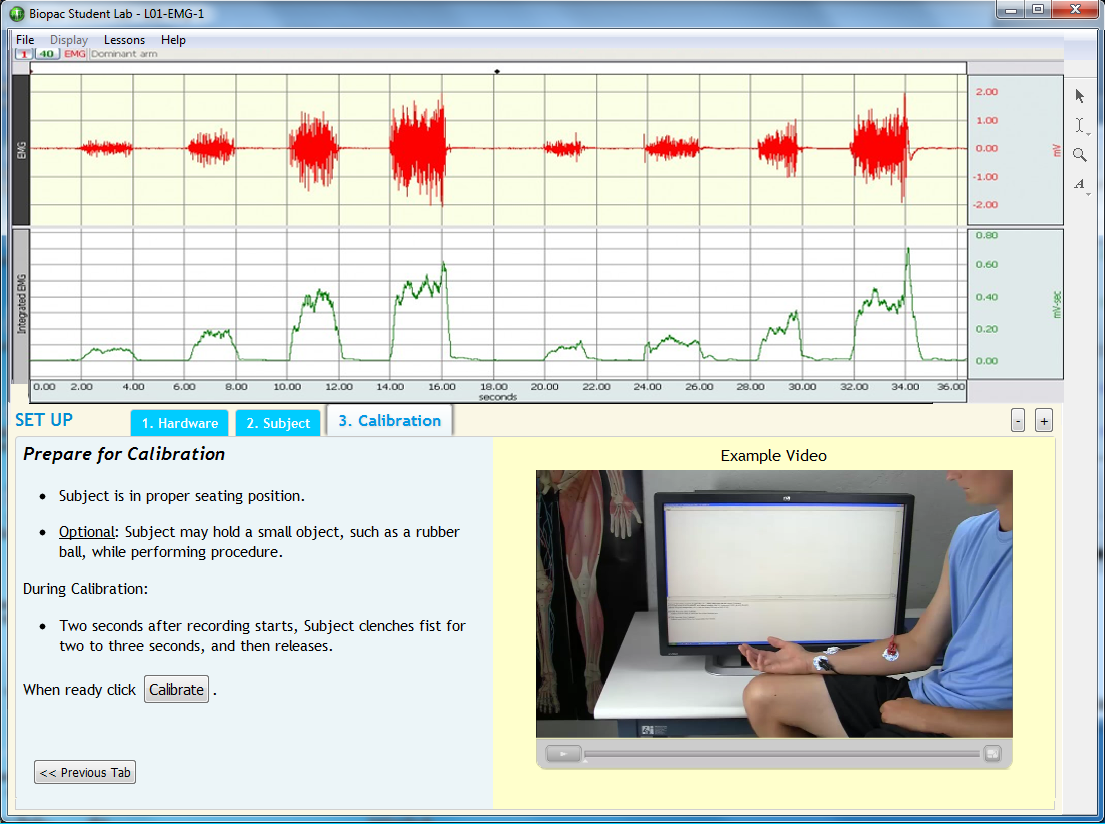L01 Electromyography I

Experimental Objectives
- To observe and record skeletal muscle tonus as reflected by a basal level of electrical activity associated with the muscle in the resting state.
- To record the maximum grip clench for the right and the left hand.
- To observe, record and correlate motor unit recruitment with the increased power of skeletal muscle contraction.
- To listen to EMG “sounds” and correlate sound intensity with motor unit recruitment.
Tasks Performed by the Student
BSL Lessons are designed to allow at least four students to record and save data in a normal lab period (60-90 minutes). Typically, labs work most efficiently with three or more students working together at each BSL System station.
- Record EMG from the dominant and non-dominant forearms.
- Clench their fist four times, increasing the grip each time to reach the maximum grip strength with the fourth clench.
- Listen to the sound of their EMG.
Videos
BSL L01 Calibration
Biopac Student Lab Student Download
Student Prep & Distance Learning
Click the link(s) below for sample data and/or lesson procedure video(s), BSL PRO Lesson procedures (PDF) for human lessons*, and graph template files (*.gtl) for BSL PRO Lessons. If more than one .gtl is available, download the .gtl with the _suffix to match BSL version and hardware.
Lesson Hardware
This lesson requires a Biopac Student Lab (BSL) System and the following hardware. If your BSL System does not include all hardware items, expand your system by selecting required items below. For more details, review the Lesson: L# BSL Lessons - see the Lab Manual or launch BSL; A# and H# BSL PRO Lessons, click the PDF link above to review full setup, recording, and analysis procedures.
| Item | Name | Cart |
|---|---|---|
| SS2LB | Lead set, shielded, BSL | Add to Cart |
| GEL1 | Electrode gel 50 g | Add to Cart |
| ELPAD | Abrasive Pads 10/pk | Add to Cart |
| EL503 | Disp. Gen-purp electrode 100/pk | Add to Cart |
Stay Connected